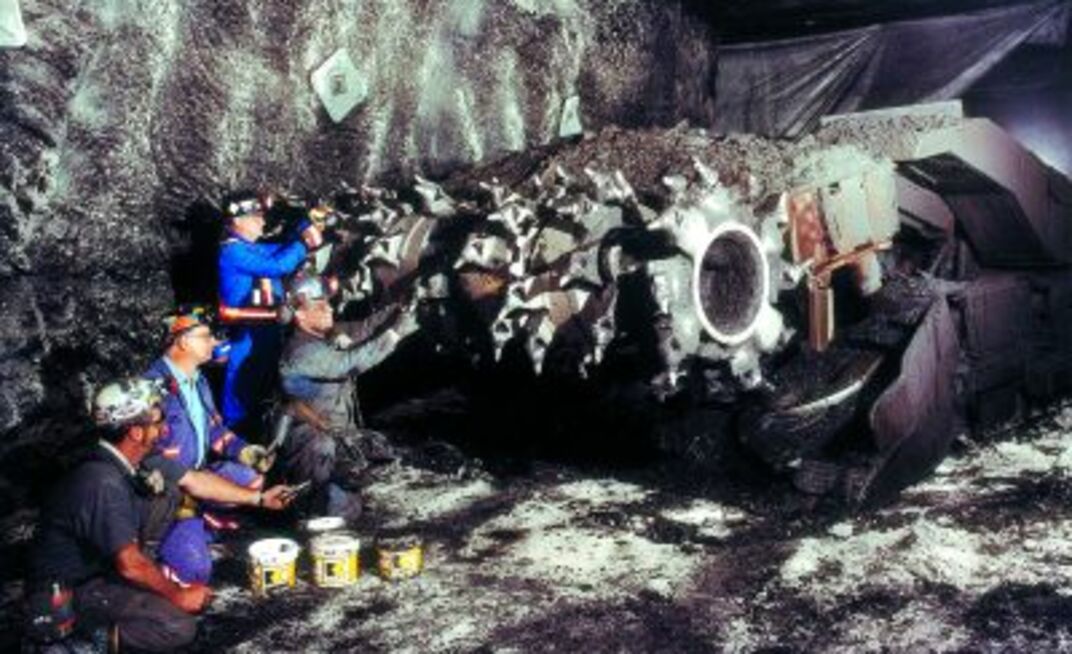Published in the May 2006 American Longwall Magazine
Kennametal offers shear and continuous miner drums along with block and tooling solutions for all major OEM brands of equipment. It is also active in the rebuild and remanufacturing of drums and cutting systems worldwide.
According to Rife, into the future Kennametal will be concentrating heavily on areas to lower operators’ cost of ownership with tooling. Engineering and design effort is also being spent on exploring different tool geometry and different metallurgical properties, as well as different materials.
Q: What new pick technologies has Kennametal introduced over the past few years and what has been their market uptake?
A: The most significant development has been the introduction of our Narrow Bottom (NB) carbide inserts for conical tooling. These inserts have been received extremely well in all of our global markets and have become our mainstay for carbide inserts. The NB insert allows us to use a smaller insert in areas where larger, more costly inserts have been utilized. The unique design of the insert allows us to achieve superior braze strength typically seen with standard plug inserts, as well as provide the penetration and body protection typically found on standard cap style inserts. Utilizing this insert has allowed us to keep the initial up-front cost of the tool competitive while achieving excellent life of the tool, which brings ownership value to our customers.
Q: What are the trends in using water in picks?
A: Lately, companies – including Kennametal – have explored using water directly in the cutting tool itself. These efforts have mainly been directed at dust generation control as well as frictional ignition control. With these type of tools a whole new set of issues arise such as tool complexity, drum complexity, up-front cost, standardization with existing equipment and added maintenance awareness. Although these issues need to be addressed and explored, Kennametal still feels the best way to control water at the cutting head is to improve the spray configurations and pressures on drum vanes and blocks. We feel this is a much simpler system for the end user in that the equipment is easier to maintain and more economical. Designs are simpler and sealing problems associated with “wet” tools are eliminated.
Q: What R&D have you carried out around frictional ignition problems?
A: We have spent a great deal of R&D development time around frictional ignition or ignition suppression issues. As more and more operations around the globe are looking for solutions in this area, we have dedicated several design teams to address these opportunities. Most of our efforts have been spent on material selection of tooling along with advancing the water spray systems on drums. We have developed some proprietary materials and processes that have shown some dramatic results in aiding ignition suppression. We are currently testing these materials in certain field locations around the world as well as continued study in our R&D center.
Q: What are some of the developments in drum technology?
A: Most recent advances have come from efforts related to better loading from enhanced lacing pattern design as well as heavier, more robust drums to maximize wear life. We continue to work on enhancements to increase time between rebuilds as well as develop cores that will withstand multiple rebuilds. We have designed some proprietary block and pick geometries to help with dust generation. We have modified Rotary Air Curtain (RAC) drums, which are used to help with ignition suppression or dust generation issues. These drums are currently in use in Australia and the UK.
Q: What work have you done into composites for picks?
A: We continue to develop proprietary grades of carbide with the focus on such areas as grain size, different binder materials and geometries. We have experimented heavily with coatings and geometries to better enhance the performance of our tools.
Q: How are computer-designed lacing patterns used for optimum cutting efficiency?
A: By combining years of experience with the latest computer design programs we can simulate different factors such as sump rates, loading and cutting efficiencies, vibration levels, haulage speeds just to name a few. This gives the design engineer the ability to quickly change parameters based on mine conditions, thus giving him or her the ability to offer the absolute best design for the application. We then follow this up with field evaluations to prove the designs and evaluate areas for improvement.
Q: What are the main industry/equipment issues longwall operators raise with your company? How are you addressing these?
A: The main issues are productivity/life of product and ignition suppression. Operators are continuing to demand that equipment providers help drive their cost of ownership down or productivity/life of product up. This is the reason for Kennametal’s continued development efforts as stated earlier.
























